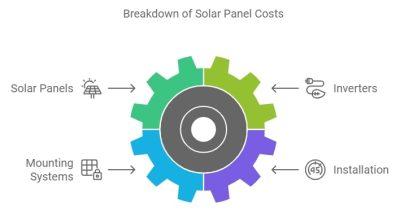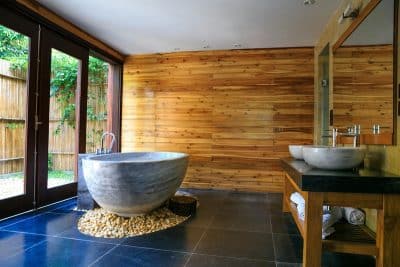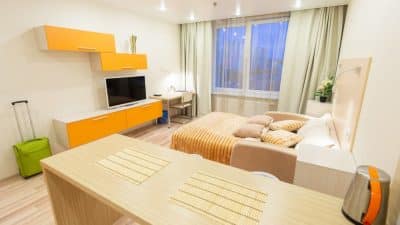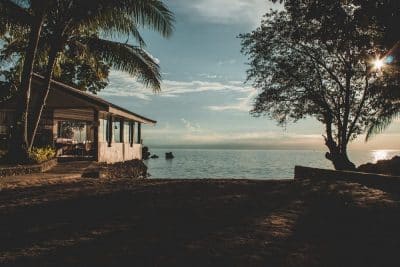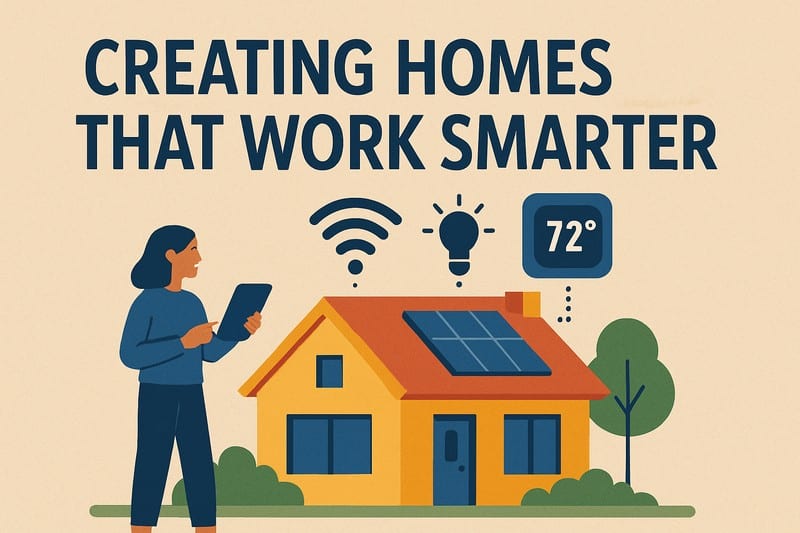
Starting in 2025, when not considering curb appeal or interior design, houses are not to be judged. The great house is one that had a balance of form and function. Smart living has nothing to do with smart gadgets, but is about designing houses that respond to the true needs of today’s families: efficiently and flexibly. When design and purpose coincide, a home is not merely beautiful; it works with you in daily life.
Let’s have a look at an elegant design, catching up with functionality to create smarter houses beneficial for everyone.
How Smart Design Increases Functionality in the Home
Smart home design is not only consistent with aesthetics but also includes the design of spaces that serve everyday life. From floor plans that streamline routines to renovations that bring long-term value, today’s homes are a great combination of form and function in ways never thought possible.
Let’s see how modern houses are utilizing smart designs to add more functionality.
1. Smart Layouts for Everyday Living
Well-designed houses are not necessarily the biggest ones. They are the ones in which every square inch is maximized. Open floor plans are still a favorite, but homeowners increasingly focus on zoned areas that have more than one function without being messy. Living areas could double as spaces for work-from-home, with kitchen islands being utilized simultaneously for prep areas and dining purposes.
Modular partitions, collapsible furniture, and modular storage allow rooms to shift with lifestyle changes. Such adaptability is especially desirable for urban dwellings where space is limited.
2. Technology Working in the Background
The smart-home revolution has finally fully blossomed. Now, it is all about integration rather than hype and flashing gadgets. Products such as phase shifter, for instance, are being employed in electrical systems to manage power more effectively, enabling homes to save energy and enhance reliability.
Smart thermostats, automated lighting, and voice control are no longer niceties but are becoming the new normal. The true magic is how these devices integrate into the background, enhancing everyday life without bombarding homeowners with complexity.
3. Utility Upgrades for Lasting Value
No house can ever be fully functional without a working plumbing system, electricity, and storage. Homeowners spend more money on higher-grade materials and supplies so that their homes can genuinely support a longer lifespan. Today, a visit to any reputable plumbing supply store has become as much a part of designing a home as picking out paint and flooring.
Fixtures that conserve water, low-flowing faucets, and durable pipes save on maintenance costs while encouraging a green lifestyle. These no-frills upgrades may lack the charm of a designer sofa, but they are worth much more in the daily performance of the house.
4. Kitchens and Bathrooms: Where Design Meets Function
The kitchen has been the center of the home since the beginning of time, and nowadays it is also the hub of efficiency. Smart devices provide functional use that is beautiful, e.g., fridges tracking food or dishwashers with a green mode. Hidden storage units and pull-out pantries make the areas look beautiful and clean, where functionality and beauty both count.
Bathrooms are also changing. Spa-style showers, touch faucets, and warm floorings bring relaxation without compromising water or energy efficiency. These areas show how careful design can transform mundane tasks into experiences of convenience and comfort.
5. Safety and Accessibility as Design Priorities
A safe home must also be a smart home. Designers are making sure to weave safety features and elements into the design, so they blend in. Wider doors, non-slip flooring, and layered lighting are finding their way into many homes with the intention of being accessible for everyone.
This approach has an aging-in-place benefit that helps keep the home a place to be able to enter, even at any age or ability. It demonstrates an evolving perception that a home should adapt to its inhabitants, and not vice versa.
6. Eco-Friendly Living That Looks Good Too
Sustainability has moved from being a special feature to just what is expected to have eco-friendly living included in home designs. Solar energy, rainwater harvesting, and re-use of materials are expected features of homes and not just a trendy added feature where design is concerned. Homeowners are also opting for reclaimed or sustainably sourced furnishings and finishes that speak to today’s aesthetics.
Even small updates, in the form of energy-efficient windows or low-VOC paint, can help develop healthier spaces while limiting the environmental footprint. Intelligent design in this regard can accomplish functional objectives while supporting a greener planet.
7. Personalization Through Design
Finally, houses are more personal. Rooms cannot just be functional anymore; they also have to be personal. Design is the means to provide individual expression, whether it is custom storage solutions or lighting systems that respond to mood.
For instance, households with small kids will opt for play-friendly designs, while remote workers will spend more on acoustic wall panels for enhanced concentration. The potential to customize design to individual requirements ensures that homes stay functional with a personal touch.
Bottom Line
The greatest homes of 2025 are not the most gadget-filled or the most eye-catching ones. They are the ones that facilitate beauty and function. By integrating thoughtful designs, functional upgrades, simple technology, and green elements, contemporary homes are becoming homes that adapt, sustain, and improve.
Whether choosing energy-saving appliances, from machinery behind the scenes, or simply being flexible with storage, today’s homes are becoming more than just pleasing. They are being constructed to be smarter for their residents.


